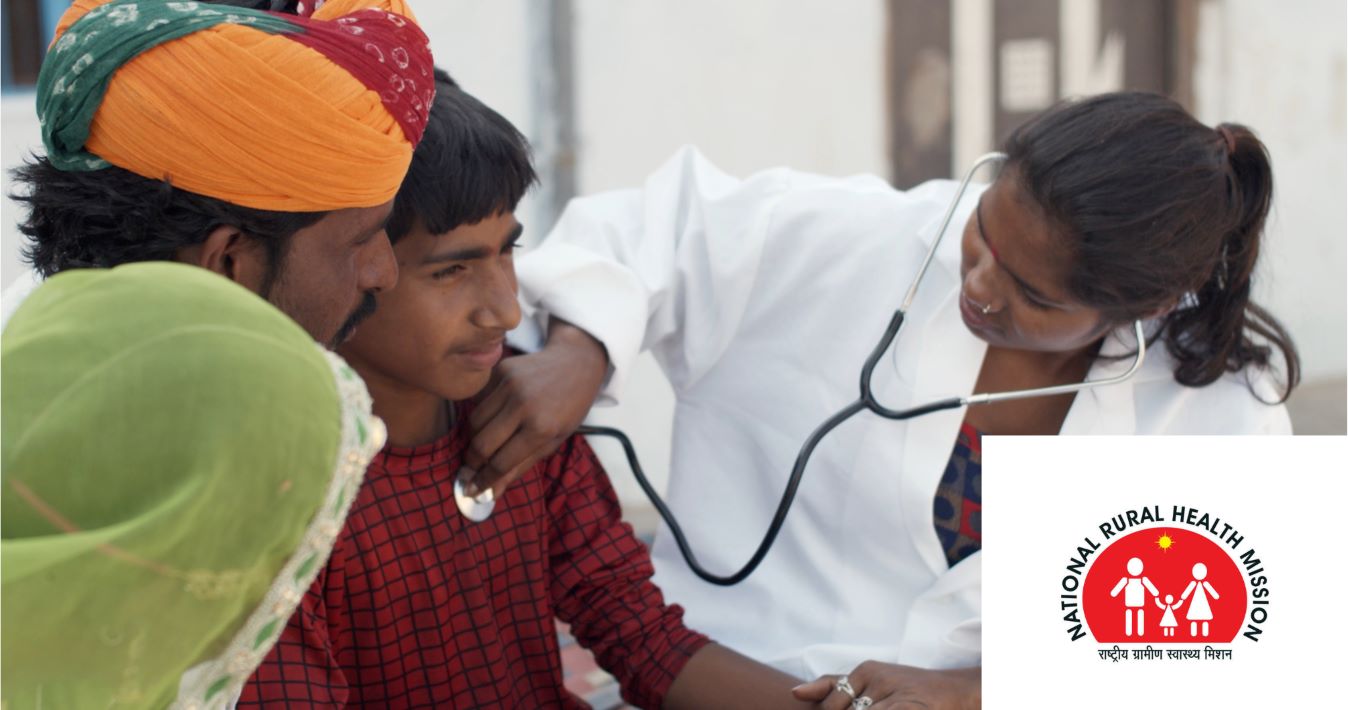7 Crore+ Customers

Affordable Premium

7 Crore+ Customers

Affordable Premium



The requirement for healthcare services has been rising in recent times. However, the accessibility and expenses of such services have been a nightmare for the vulnerable population. Keeping this in mind, the Indian Government introduced NRHM (National Rural Health Mission) to provide high-quality and affordable healthcare facilities to the rural population.
Are you looking for easy-to-access healthcare benefits in rural settings? Then, stick with this article to find out all about NRHM and ways to utilise its facilities!


The former Prime Minister of India launched NRHM (National Rural Health Mission) in April 2005. There have been frequent complaints among Indian citizens regarding healthcare services and their availability, particularly in rural areas. The emphasis of NRHM is on Reproductive, Maternal, Newborn, Child Health and Adolescent (RMNCH+A) Services. It focuses on developing strategies to improve maternal health and child care.
Its long-term goal is to provide a fully-functional and decentralised health delivery system. It also aims to provide inter-sectoral convergence at all levels to ensure health determinants such as education, nutrition, sanitation, water, social equality, and others.
The National Rural Health Mission (NRHM) is a vital healthcare instrument in rural India. It primary roles are:
Overall, NRHM aims to establish a well-functioning health system that is accessible to everyone, cost-effective, and improves the overall well-being of people living in rural areas across India.
The primary objectives of NRHM focus on the overall government vision to help citizens access affordable healthcare facilities. Outcomes of NRHM have hardly changed with amendments to the 12th plan. Therefore, the following National Rural Health Mission objectives are primary to its long-term vision.
In essence, the National Rural Health Mission aims to improve healthcare in rural areas by upgrading facilities, expanding services, and involving local communities to ensure better health for everyone.
NRHM was launched as the Government's commitment to improving the healthcare architecture at lower expenses. While analysing its features and benefits, one must understand what NRHM means to the Indian Government and its target citizenship.
Some basic facilities of NRHM include providing a high-quality and accessible healthcare infrastructure for the vulnerable population in rural areas. Apart from the Empowered Action Group (EAG) States, it is also functional in most rural regions of Jammu & Kashmir, Himachal Pradesh and the North Eastern States. In addition, it has added over 1.88 lakh other health human resources, including multi-skilled doctors, GDMOs (General Duties Medical Officers), ANMs (Auxiliary Nurse Midwife) and Staff Nurses.
The Free Drugs Service is a significant feature of the NRHM scheme. The Government allows additional 5% incentives over the allocated funding for drugs. When the Indian States/UTs meet certain specifications, they can utilise the benefits of the NHM-Free Drug Service Initiative. The NHM-Free Diagnostics Service Initiative, on the other hand, provides free diagnostic services to all eligible states within their resource envelope. This feature incorporates High Cost-low frequency diagnostic services, Lab technicians and equipment, Radiologists and other Human Resources.
The first port of call for the marginalised population rests with the responsibility of the ASHAs. Keeping this in mind, the Indian Government has incorporated more than 9.5 Lakh ASHAs serving the roles of facilitators, mobilisers and providers as a part of the community-level care. Thus, most states have indulged in ASHA training of young candidates to develop higher-quality delivery, immunisation and maternal support.
The members of this committee manage the hospital affairs and ensure better facilities for the target citizens under NRHM. The Government offers financial assistance to these committees to avoid dropping the quality of patient welfare. Rogi Kalyan Samitis, on the other hand, look after the community members in all District Hospitals (DHs), Sub-District Hospitals (SDHs), Primary Health Centres (PHCs) and Community Health Centres (CHCs).
This feature enables NRHM to ensure community empowerment and sanitation at the grassroots levels. Representatives of Panchayati Raj, ASHA and other frontline workers comprise members of VHSNC. The Government provides untied grants of ₹10,000 annually for maintaining sanitation and nutritional requirements of the eligible citizens under NRHM.
The JSY (Janani Suraksha Yojana) under NRHM aims to reduce maternal mortality while encouraging them to undertake government facilities during their deliveries. This scheme offers cash assistance to eligible pregnant women when they give birth under NRHM. On the other hand, the JSSK (Janani Shishu Suraksha Karyakram) enables eligible women to avail themselves free of cost deliveries, even those having a caesarean section. Apart from free drugs and diagnostics, they also receive diets, blood provisions and transportations from this scheme.
Under NRHM, NMMUs are established in 333 out of 672 districts. These aim at enhancing the visibility of government healthcare facilities and thereby increase the awareness of the rural population regarding healthcare importance. In addition, NAS (National Ambulance Services) enables people to receive ambulance services by simply dialling 102 or 108.
The role of NRHM is therefore evident from the discussion above. It aims at helping the Indian citizens, especially from the vulnerable population in the country's rural regions. In this regard, one might wonder about the specific benefits of this mission. These are as follows:
In brief, the National Rural Health Mission offers benefits like improved healthcare services, better access to medical care, and stronger community health programs in rural areas.
The vision of India’s National Rural Health Mission revolves around the vulnerable section of the Indian population. It serves the eight socio-economically backward states, including Chhattisgarh, Bihar, Madhya Pradesh, Jharkhand, Rajasthan, Orissa, Uttar Pradesh and Uttaranchal. In addition, it focuses on the rural areas of Jammu & Kashmir, Himachal Pradesh and the North Eastern States. Rural people who are permanent residents of these areas are eligible and free to avail themselves under NRHM. The target audience of this scheme mainly includes socially backward people in rural areas, unable to access proper healthcare services at an affordable budget.
There is no specific method of applying to the National Rural Health Mission. Individuals can enjoy its benefits if they are permanent residents of areas where NRHM is functional. However, you can visit the official portal of the National Health Mission and check out all options available before applying under NRHM. Here, you will find a toll-free helpline number, where you can call and ask for assistance. Moreover, you can also check your complaint status from the options available on this page.
It, therefore, goes without saying that the development of NRHM is a practical initiative of the Indian Government to uplift the vulnerable groups in terms of healthcare facilities. Proper utilisation of the benefits of this mission enables eligible people to access healthcare and nursing benefits without having to move to urban areas or spending a lump sum.
You may also like to read: